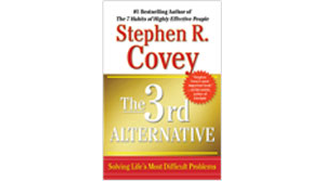A Highway to Hell – paved with dated communication strategies
(Adapted from a longer post on AN INCONVENIENT SPECIES)
I read a recent climate article by a well-respected Australian scientist – and ended up concerned as well as deeply disappointed. (I wasn’t super-surprised at its overall focus, however).
The primary message still seemed to come across as: “Be terrified and angry. Stop being irresponsible, use much less and vote much better”.
I wasn’t surprised, because it’s an approach that goes back decades.
It is disappointing, however, that in 2024 many otherwise knowledgeable sustainability advocates still seem to be stuck in outdated models of human behaviour change and human systems change.
In the last 50 years, our understanding of human systems has massively increased AND become much more widely available in print and online. For example, we know that:
- “Helplessness is learned way to easily“. Unrelieved fear, shame and blame create helplessness, anxiety and resistance, NOT CHANGE.
- “What’s focal is perceived as causal”. A continuous focus on “vote better and use less” messages risks reducing visibility of today’s rich smorgasbord of commercial, evidence-based, innovative solutions.
- “Disruptive technology innovation ISN’T led by government”. Entrepreneurs built cars – governments built roads. Entrepreneurs built the commercial Internet, governments built broadband networks.
It’s not just disappointing – to me it’s also seriously concerning
The six planetary boundaries already exceeded by 20th century production and supply systems are the result of the extractive mine/make/use/dump thinking that developed them.
Hundreds of regenerative commercial solutions exist today – solutions that offer the global economy trillions of dollars of economic savings.
Yet the prevailing message of a disappointing number of “problem experts” continues to be:
- Feel afraid and angry.
- Use less today.
- Vote better.
What smarter influencing tools can we apply?
30 years on from the 1990 GPCC report, how is it useful to keep repeating and repeating messages like: “our political leaders have failed us so far – and you disengaged, over-consuming citizens REALLY have to vote more responsibly and use lots less”.
We have a rich smorgasbord of commercial regenerative production and supply solutions today – thanks to 30+ years of solutions commercialisation.
We also have a wealth of smarter tools for influencing and innovating in human systems widely available – thanks to 50+ years of social and psychological research and development.
Career and business opportunity abound
Today’s rich smorgasbord of proven commercial solutions and innovative design frameworks means that anyone who works in any sort of business role could take direct solutions action today (while waiting for their next opportunity to vote):
- Industrial engineers may be usefully employed in accelerating Circular Economy innovation while they wait for the next election.
- Chemical engineers may benefit from spreading Green Chemistry and Biomimicry-based solutions into their industry wile they wait for the next election.
- Community development workers might more productively explore Doughnut Economics projects and the 70+ Project Regeneration action lists while they wait for the next election.
- Entrepreneurial thinkers and ambitious professionals may benefit from exploring Project Drawdown’s online catalogue of 93 evidence-based commercial solutions while they wait for the next election.
- Sales, HR and purchasing professionals might find useful action to take in Project Drawdown’s Job Function Action Guides while they wait for the next election.
What would a different message be?
By contrast, here’s what veteran solutionist and multi-bestselling author Paul Hawken said in his latest global best seller REGENERATION: ENDING THE CLIMATE CRISIS IN ONE GENERATION (2021)
Hawken acknowledges our human systems reality in the book’s introduction, and the Project Regeneration website catalogues today’s accessible actions (visit the Project Regeneration Action Nexus).
“If we want to get the attention of humanity humanity needs to feel it is getting attention. If we are going to save the world from the threat of global warming, we need to create a world worth saving.”
Paul Hawken, REGENERATION
Looking to politics for solutions feels like “We’re off to see the Wizard…”
Dorothy landed in Oz and wanted to get home to a safe, restorative place. So on the advice of the locals, she set off to see the Great and Powerful Wizard Oz.
Along the way, she connected with fellow travellers looking for solutions. They travelled together down that Yellow Brick Road – and had a lot of hassles in getting to the Emerald City.
When Dorothy and friends got to the Emerald City, they discovered that Oz wasn’t actually an all-powerful wizard – just an ordinary, flawed mortal. In the end, Dorothy and her friends turned out to have all the resources they needed to achieve their dreams – themselves.
We DO need government policy improvements – AND ALSO commercial solutions action today…
As the years go by and more and more practical, regenerative solutions come to local and global markets, I feel increasingly sorry for those campaigners still living in 20th century stories about how “government action” is going to somehow deliver “the answer”.
Yes, we need policy change AND we can take a whole lot of rewarding, practical, commercial solutions action today.
Decades of fear-laden, blame-and-shame limited-solution demands for “politicians to deliver better policy” hasn’t delivered much in the way of results.
In the mean time, innovators, entrepreneurs and early adopters have spent those 30 years building rewarding, regenerative business solutions and bringing them to market.
More and more of their solutions have made it across the “innovation chasm” to the leading edge of the early majority.
Change the design thinking and kick start the innovators and entrepreneurs
Systems Thinking developer Donella Meadows put together a hierarchy of the most to least powerful places to change a system. She ranked the common leverage points from most powerful to least powerful, and documented it in the first draft of the book THINKING IN SYSTEMS that she circulated in 1993.
The LEAST powerful place (#9) that Meadows identified as leverage point to generate systems change was in “Constants, parameters, numbers (such as subsidies, taxes, standards)”. A somewhat more powerful place (#4) to make change is in the rules of the system.
However:
“The most powerful place to change a system is in the mindset that created it”
Donella Meadows, THINKING IN SYSTEMS
Create a positive, inspirational call
The French Revolution was powered by the ideals of “Liberty! Equality! Fraternity!” – not just “kill the king”.
Sustainability and solving today’s multiple ecosystems harms isn’t just about “stopping fossil fuels” and “reducing consumption” – we’re way beyond that being enough to fix what’s damaged.
Given the limitations – and potential HARM – that fear-based messaging which calls for “the government to act” does, surely it’s time for some smarter options? Especially given the limited power of regulation and policy to create change
What about some more fun, magic and impact?
What about calling for people to join together to Reimagine! Regenerate! Revitalise! the world today – using the solutions we have today?
AND what about spending more of our time telling them HOW to avoid missing out on today’s solutions that make the world better today.





